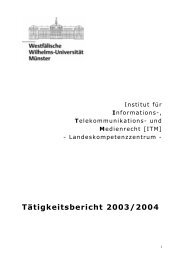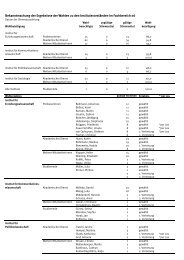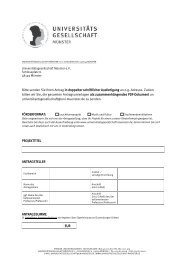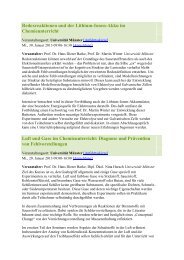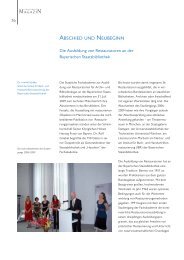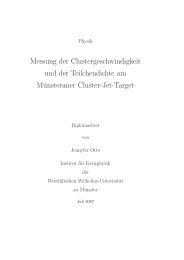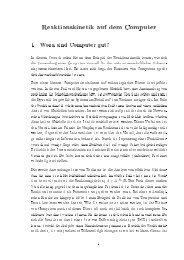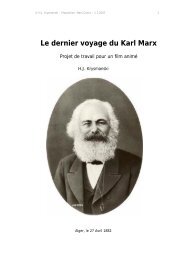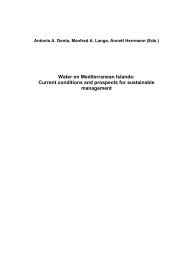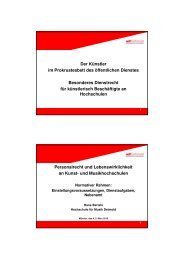oye GentleIllen Arabic Studies on Science and Literary Culture
oye GentleIllen Arabic Studies on Science and Literary Culture
oye GentleIllen Arabic Studies on Science and Literary Culture
Create successful ePaper yourself
Turn your PDF publications into a flip-book with our unique Google optimized e-Paper software.
306 THOMAS BAUER<br />
(4) 1he sec<strong>on</strong>d hunting episode.A hunt with the crossbow <strong>and</strong> hunting<br />
birds (sakers <strong>and</strong> goshawks) follows.This form of the hunt was also<br />
the subject of the rasä'il bunduqiyya that were so popular in these days.<br />
The episode in this muzdawija is of a predominantly narrative character.<br />
Descriptive lines are dedicated to the crossbow (line 37) an,dthe hunting<br />
birds (lines 41-42). The hunted birds) which are described in detail in<br />
the risäla bunduqiyya by Ibn al-'Attär)are menti<strong>on</strong>ed <strong>on</strong>ly in the act of<br />
fleeing (line 40) <strong>and</strong> no further descripti<strong>on</strong> is(dedicated to them. The<br />
first verse of couplet 45 is a near verbatim quotati<strong>on</strong> of-al-Warräq) line<br />
17a: .J~ ,f -*\ ~ J.>b ... .58The reference to the sunset in line 46<br />
closes the time frame that was opened in the first paragraph with the<br />
descripti<strong>on</strong> of the daybreak. This does not necessarily mean that the<br />
hunt lasted a single day <strong>on</strong>ly. Instead) it is quite probable that hunting<br />
expediti<strong>on</strong>s of this kind extended over more than <strong>on</strong>e day <strong>and</strong> included<br />
bivouacking) as the followingline shows.<br />
(5) 1he takhallu~.The hunting party returns to their bivouac full of<br />
joy <strong>and</strong> starts to praise the dawädär)who appears as the master of the<br />
hunt) though probably its real meisterwas the governor Tankiz. Just as<br />
the muzdawija poems by al-Warräq <strong>and</strong> Ibn Nubäta) this is a panegyric<br />
poem.lfusn al-takhallu~)a good transiti<strong>on</strong> between the first part <strong>and</strong> the<br />
panegyric secti<strong>on</strong>) is <strong>on</strong>e of the main requirements of panegyric texts.<br />
In this field) Ibn I:Iijjac<strong>on</strong>sidered the achievements of 'modern) poets<br />
like Ibn Nubäta much superior to that of Abbasid <strong>and</strong> older authors.59<br />
Shihäb al-Dins takhallu~creates an atmosphere of joy <strong>and</strong> enthusiasm<br />
after a successful hunt. In this situatiOl!)the desire to thank <strong>and</strong> praise<br />
its master comes in quite naturally)most typically within the frame of a<br />
c<strong>on</strong>cluding banquet. .<br />
(6) 1hepanegyric secti<strong>on</strong>.The c<strong>on</strong>cluding madi~ rounds offthe poem.<br />
Despite its new subject) it is not feit like an alien element. This is mainly<br />
due to the fact that it is a perfect echo of the descripti<strong>on</strong> of nature in<br />
the first paragraph. In the introducti<strong>on</strong>) dew) rain) bounty <strong>and</strong> beauty<br />
set the mood of the hunting expediti<strong>on</strong>. In the c<strong>on</strong>clusi<strong>on</strong>) we learn the<br />
true nature of nature: it is nothing but the dawädär hirnself. Nearly all<br />
key words from the first secti<strong>on</strong> are repeated in the last <strong>on</strong>e or substituted<br />
by near syn<strong>on</strong>yms: compare muzn) ghamäma (lines 5) 10)- sa~äb)<br />
58 Ibn Fa(;UAlläh, Masälik, XIX, p. 255.<br />
59 See Ibn l:Iijja,Khizänat al-adab, II, pp. 399-433.



